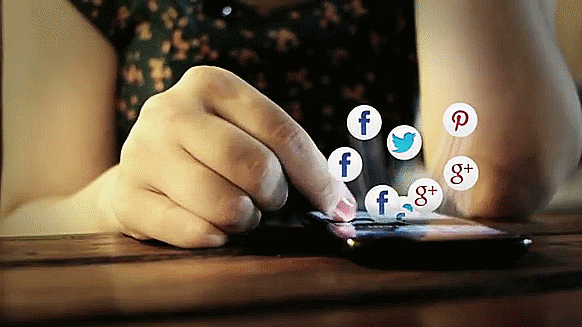The Internet is considered one of the most revolutionary inventions in the world. That lead to the creation of social media, or social networking sites (SNSs), in which it have been changing the way humans communicate, think, act, do business, and etc. SNSs refers to websites that are designed to allow people to share content (photos, videos, opinions, events) quickly, efficiently, and in real-time.
According to the lecture in my Digital Communication class (COM 2733), the first social networking site was created in 1997 by Andrew Weinreich. The website called “SixDegree.com” was the first one to meet the three requirements of a SNS, which were (1) make a public or semi-public profile; (2) communicate with others; and (3) view the entire network. After that, other social media sites were created such as Friendster and, what became famous for many years, MySpace. However, Facebook “changed the game” when it made it possible for the users to have a “news feed” on their home page, allowing them to see updates from their friends, without having to click to that friend’s page. Another innovation that Facebook brought was limiting the status update to 420 characters, embracing microblogging. This revolutionized Computer-Mediated Communication (CMC) and inspired many other social media to adopt this style. Along with Facebook, Twitter, Instagram, and Snapchat dominated the Internet and caused a huge impact on many people’s lives. According to 2018 data, the average American spends over 10 hours per day consuming media and SNSs account for approximately 1⁄4 of this time (2.5 hours).
Ever since SNSs became popular, the majority of studies about it discuss the negative effects it causes on people and/or in society. In order to shift the focus a little bit, I read a research article that reexamines the relationship between social media and happiness. After studying several social media platforms such as Facebook, Instagram, LinkedIn, Twitter, and etc., the main results obtained were that blogs, Instagram, and LinkedIn are positively associated and Twitter is negatively associated with the frequency of social comparison with friends on social media (Chae, 2018, p.1661). The effects of social media platforms on relative happiness were fully mediated by social comparison behavior.
The article explains that different social media platforms may function differently in the social comparison process. Twitter is used more to disseminate news rather than presenting the self, thus, observing others’ self-presentation is less likely to be the main goal of Twitter users. On the other side, SNSs such as Instagram and LinkedIn have a positive association with social comparison, which can lead to unhappiness.
I found it interesting that two social media with such a distinct initial purpose, being Instagram to share photos and videos and LinkedIn to share your educational background and professional skills, would be the ones who would mostly lead to social comparison. Chae, J. explained in the article that self-presentation on Instagram produces thoughts and feelings in viewers’ minds, which can lead to either upward or downward comparison. However, the name of a prestigious university and recent employment posted on others’ LinkedIn almost always leads to an idealized impression (Johnson and Knobloch‐Westerwick, 2017).
References
Chae, J. (2018). Reexamining the relationship between social media and happiness: The effects of various social media platforms on reconceptualized happiness. Telematics & Informatics, 35(6), 1656–1664. https://doi-org.libweb.lib.utsa.edu/10.1016/j.tele.2018.04.011
Johnson, B.K., Knobloch-Westerwick, S., 2017. When misery avoids company: selective social comparisons to photographic online profiles. Hum. Commun. Res. 43 (1), 54–75. http://dx.doi.org/10.1111/hcre.12095

The social comparisons that result from using different social networks make a lot of sense. The image that people cultivate on Instagram, LinkedIn and Facebook is idealized. People only put forth what they want others to see – basically a highlight reel of only the good parts of life. It’s important when making social comparisons to keep this in mind. Public profiles are not a perfect indicator for the relative value of someone’s personal life.
ReplyDeleteI definitely can see why LinkedIn and Instagram would be associated with social comparison because we tend to look at where people graduated from or where they work at and who they are associated with on their profiles. We think we know all about a person’s life by viewing their SNS profiles but in reality we only know small amount of things about them because people tend to post only what they want others to see.
ReplyDelete-Clarissa Villanueva